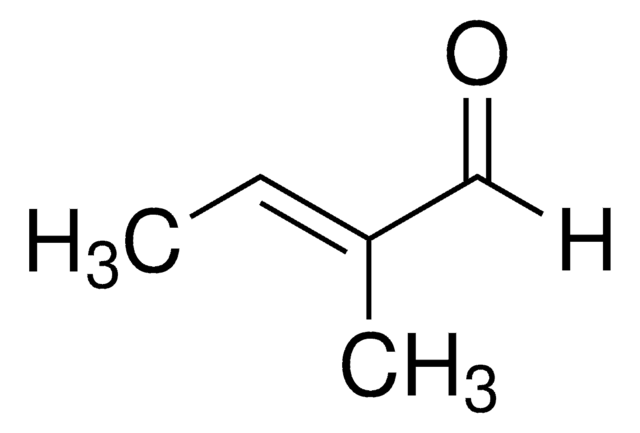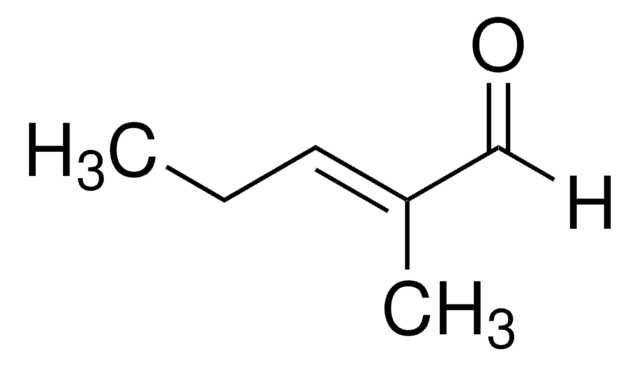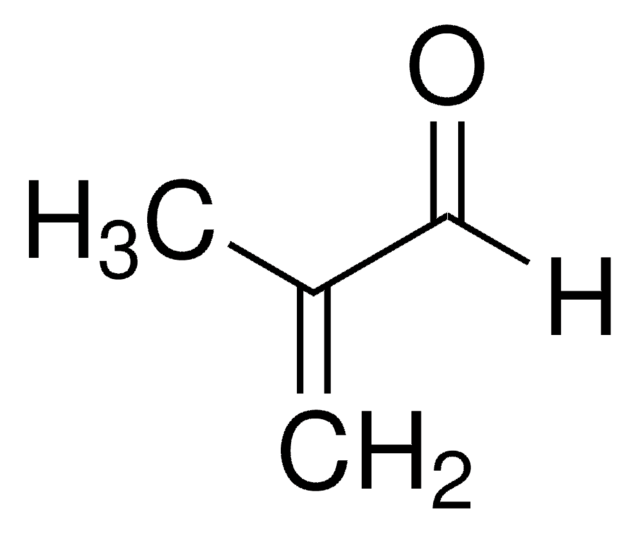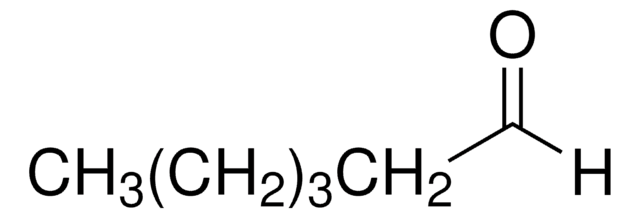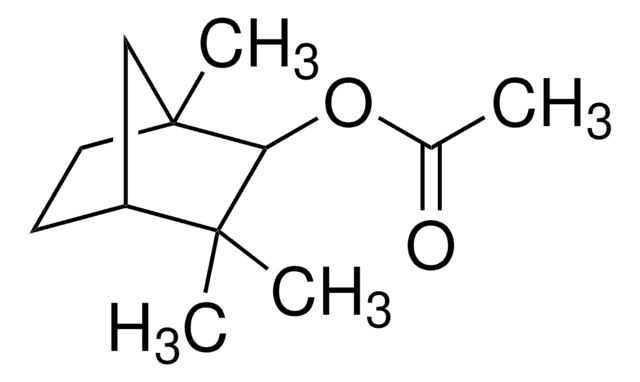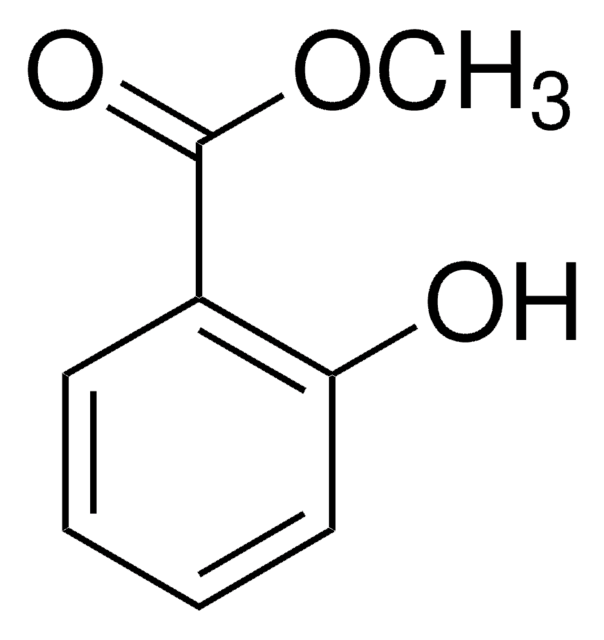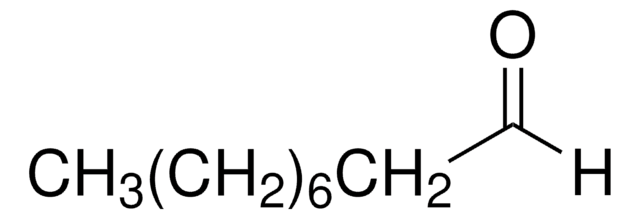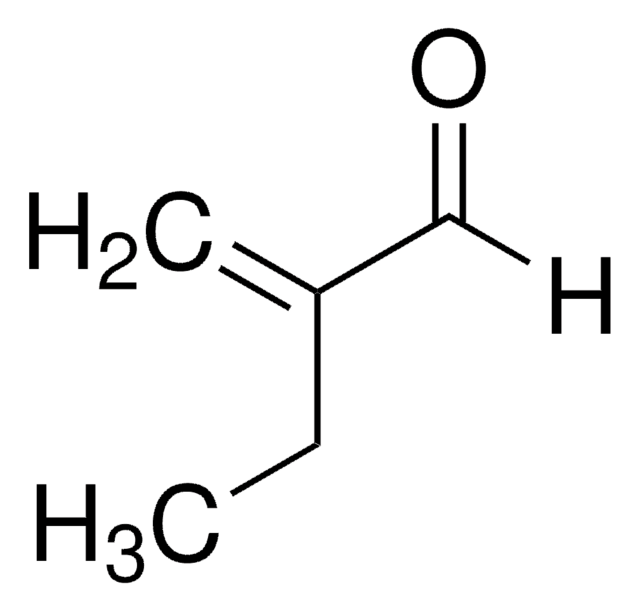W340707
trans-2-Methyl-2-butenal
sum of isomers, ≥99%, FG
Synonym(s):
Tiglic aldehyde, (E)-2-Methylbut-2-enal, trans-2,3-Dimethylacrolein, trans-2-Methyl-2-butenal, Tiglinaldehyde
About This Item
Halal
Kosher
Recommended Products
biological source
synthetic
Quality Level
grade
FG
Halal
Kosher
Agency
meets purity specifications of JECFA
reg. compliance
EU Regulation 1334/2008 & 178/2002
Assay
≥99%
impurities
<2.0% tiglic acid
refractive index
n20/D 1.448 (lit.)
bp
116-119 °C/752 mmHg (lit.)
116-122 °C
density
0.869 g/mL at 20 °C
0.871 g/mL at 25 °C (lit.)
application(s)
flavors and fragrances
Documentation
see Safety & Documentation for available documents
food allergen
no known allergens
Organoleptic
green; fruity
SMILES string
C\C=C(/C)C=O
InChI
1S/C5H8O/c1-3-5(2)4-6/h3-4H,1-2H3/b5-3+
InChI key
ACWQBUSCFPJUPN-HWKANZROSA-N
Looking for similar products? Visit Product Comparison Guide
General description
Application
- Gas-Phase Reaction of trans-2-Methyl-2-butenal with Cl: Kinetics, Gaseous Products, and SOA Formation.: This study provides a comprehensive analysis of the atmospheric reactions involving trans-2-Methyl-2-butenal, highlighting its impact on air quality and secondary organic aerosol (SOA) formation. Such insights are crucial for environmental chemists and policymakers aiming to understand and mitigate air pollution (Antiñolo et al., 2020).
Signal Word
Danger
Hazard Statements
Precautionary Statements
Hazard Classifications
Eye Irrit. 2 - Flam. Liq. 2 - Skin Irrit. 2 - STOT SE 3
Target Organs
Respiratory system
Storage Class Code
3 - Flammable liquids
WGK
WGK 3
Flash Point(F)
69.8 °F - closed cup
Flash Point(C)
21 °C - closed cup
Personal Protective Equipment
Regulatory Information
Choose from one of the most recent versions:
Already Own This Product?
Find documentation for the products that you have recently purchased in the Document Library.
Our team of scientists has experience in all areas of research including Life Science, Material Science, Chemical Synthesis, Chromatography, Analytical and many others.
Contact Technical Service